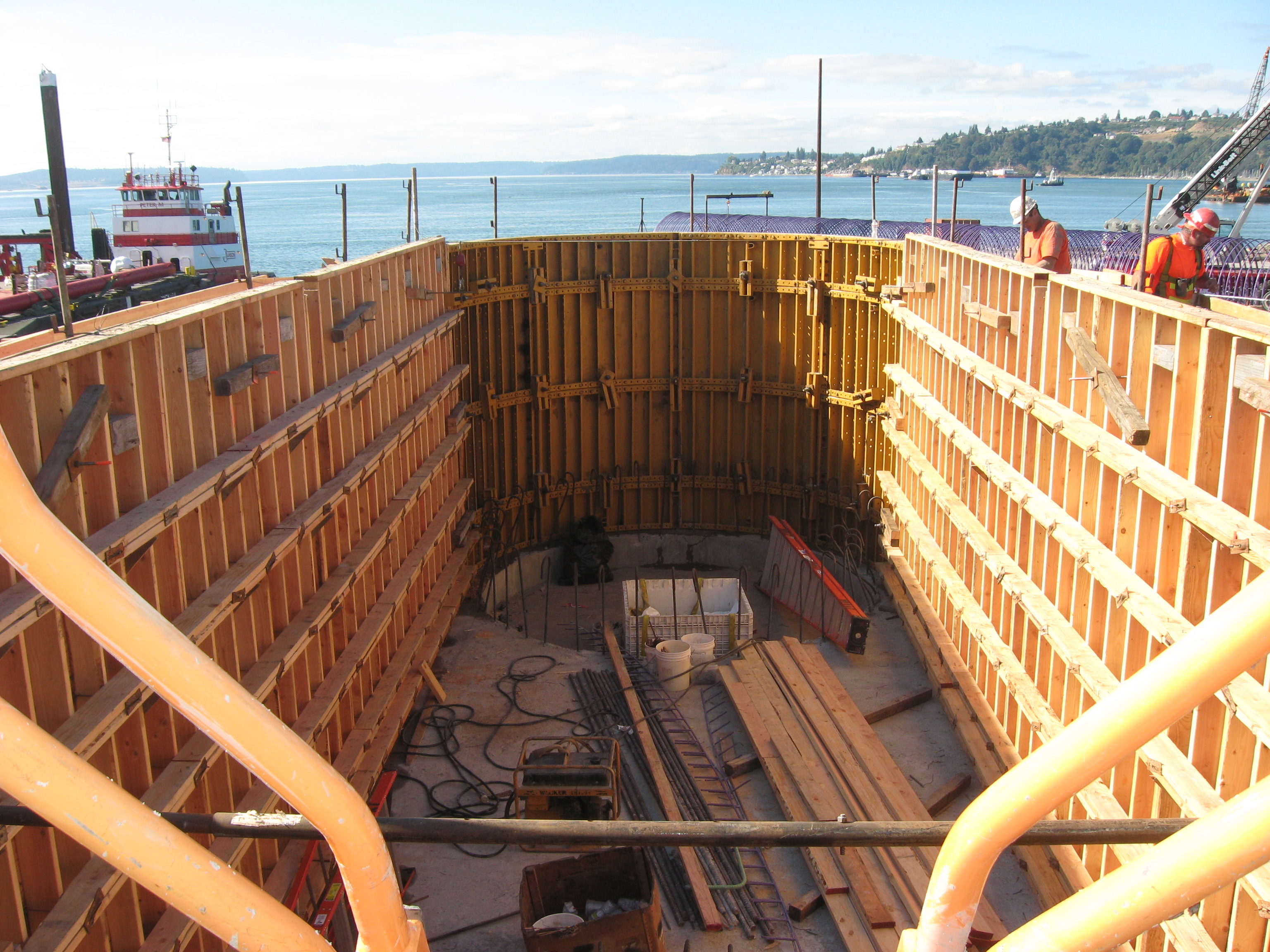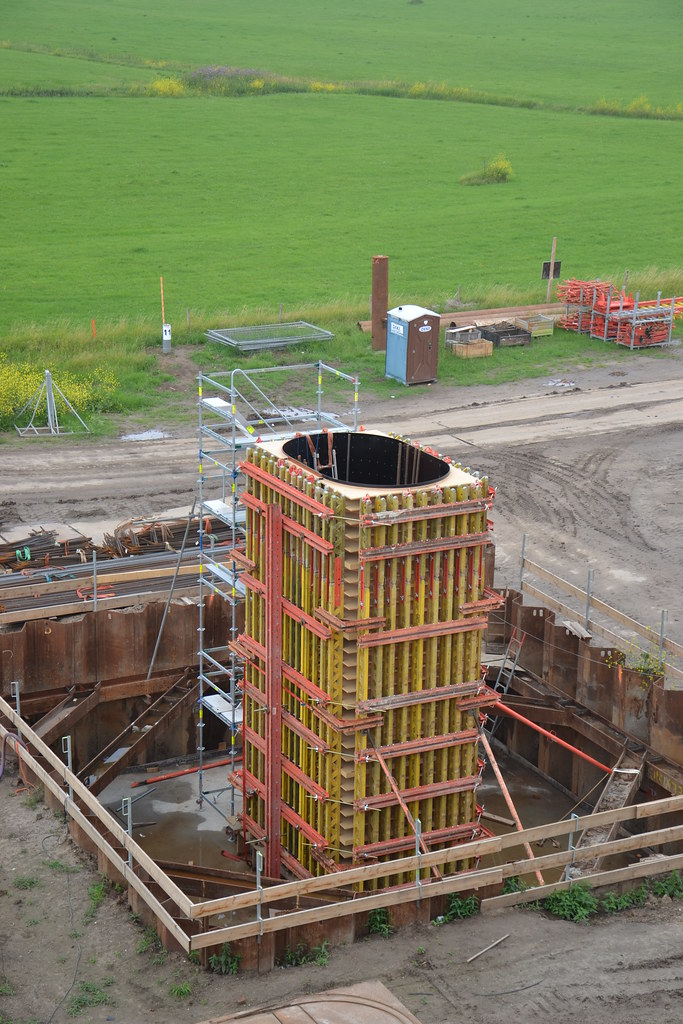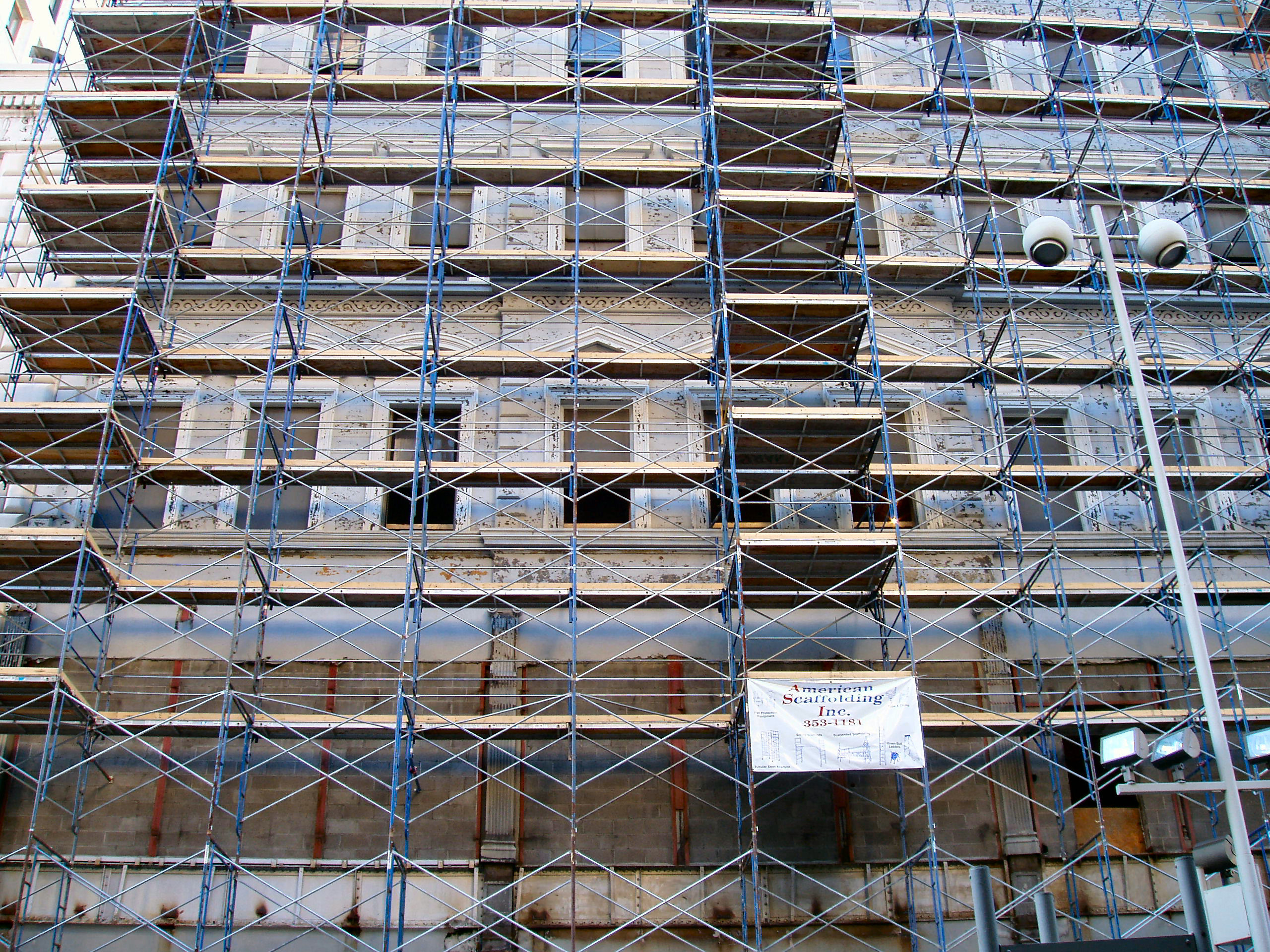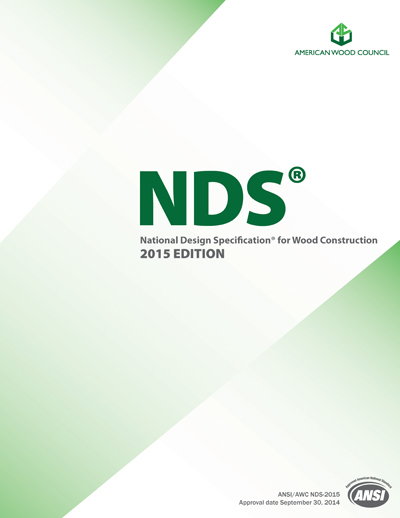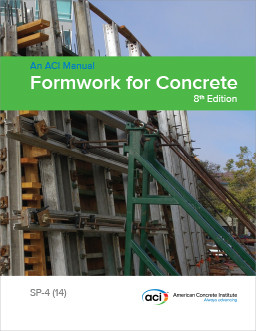BCN 4423 - Temporary Structures¶
Introduction¶
(You may have to press Ctrl and - at the same time to zoom out and view this entire slide.)
(Press the light blue down arrow at the bottom right next)
If any part of this presentation does not work contact the UF Computing Help Desk and tell them you need help with a "reveal.js presentation".
If you don't see a video above try viewing this presentation in a different browser like Firefox or Chrome.
(Press the blue down arrow at the bottom right when you are done with the video.)
You made it!¶
Press the play button.
(Note: you made need to tell them that you are using a "reveal.js" presentation)
Keep a look out for the LIGHT and DARK BLUE down arrows.
Useful Tip:¶
If you use Firefox or Chrome then installing one of the following extensions will make viewing images in lectures easier.
- Firefox - Thumbnail Zoom Plus (Not all bordered images will have a zoomed version with this extension, but most will.)
- Alternative for updated Firefox - HooverZoom (This may not be compatible with all images.)
- Chrome - Imagus (This works better than the Firefox extension.)
(Press the blue arrow to the right at the bottom right of the screen to move on the the Course Objectives.)
Course Objectives¶
1. Course Introduction Objectives¶
- Be able to find the information contained within the course syllabus.
- Be able to state why temporary structures are important to the construction industry.
- Be able to use the course discussion page and make a post.
(Click on the blue down arrow for more descriptions about the course modules.)
2. Introduction to Timber Objectives¶
- Be able to recall aspects of wood as a material.
- Be able to find appropriate sections in the Timber NDS code.
- Be able to differentiate the need for tributary area and width.
3. Timber Beam Objectives¶
- Be able to analyze and compare allowable vs actual bending stress.
- Be able to analyze and compare allowable vs actual shear stress.
- Be able to analyze and compare allowable vs actual deflections
4. Timber Column Objectives¶
- Be able to analyze and compare allowable vs actual slenderness ratio.
- Be able to analyze and compare allowable vs actual compressive stress parallel to grain.
- Be able to recognize Euler buckling.
5. Bracing Objectives¶
- Be able to calculate the lateral load on a brace from a wall form.
- Be able to calculate the lateral load on a brace from a slab form.
- Be able to discuss why braces should be loaded in tension.
- Be able to analyze and compare allowable vs actual tension stress in a brace.
- The student should be able to discuss why a brace’s connection stiffness is important to the stability of a slab form.
6. Span Limit Derivations and Formwork Safety Objectives¶
- Be able to interpret the typical span limit calculations.
- Be able to recall reasons why is is important to know how to build and operate concrete formwork correctly.
7. Wall Form Objectives¶
- Be able to identify the components of a wall form.
- Be able to calculate the concrete pressure for a wall form.
- Be able to calculate the required spacing for plywood supports.
- Be able to calculate the required spacing for stud support.
- Be able to calculate the required spacing for wale support.
- Be able to analyze and compare the allowable vs actual compression perpendicular to grain for studs and wales.
- Be able to calculate the required strength for wall ties.
- Be able to summarize the design requirements for a wall form.
- Be able to use the design tables in the Formwork text to design a wall form.
(If you installed the recommended Firefox addon or Chrome extension, hover your mouse over the picture below.)
8. Column Form Objectives¶
- Be able to calculate the concrete pressure for a concrete form.
- Be able to analyze and compare the allowable vs actual bending stress for flat studs in column forms.
- Be able to find the correct spacings for column form clamps
9. Slab Form Objectives¶
- Be able to identify the components of a slab form.
- Be able to calculate the required spacing for plywood supports.
- Be able to calculate the required spacing for joist support.
- Be able to calculate the required spacing for stringer support.
- Be able to analyze and compare the allowable vs actual compression perpendicular to grain for joist and strings as well as for shores and strings.
- Be able to analyze and compare allowable vs actual compressive load of a timber shore.
- Be able to use the design tables in the Formwork text to design a slab form.
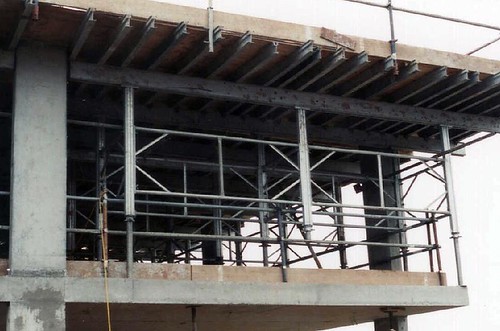
10. Re-shoring Objectives¶
- Be able to calculate the loads on shores and the slabs they support.
11. Scaffolding Objectives¶
- Be able to identify the types of common scaffolding.
- Be able to identify who can design a scaffold.
- Be able to recall the types and amounts of scaffold loads.
- Be able to calculate the ASD load combinations for a scaffold platform.
- Be able to devise a frame scaffold plan.
12. Excavation Objectives¶
- Be able to identify characteristics of soil types A, B, and C.
- Be able to classify soil based on the OSHA field tests.
- Be able to identify the parts of excavation shoring components.
- Be able to demonstrate the correct interpretation of the the OSHA Timber Trench Shoring design tables.
13. Equipment Objectives¶
- Be able to identify material hoisting equipment based on load requirements.
- Be able to identify personnel hoisting equipment based on usage requirements.
- Be able to be able to state alternative formwork systems.
Required Texts¶
Required text: The 2015 Wood Design Package (You can use the "View Only" pdf versions of the NDS for Wood Construction and NDS Supplement but if you want a hard copy I recommend the 2005 version.)
Required text: David W. Johnston “Formwork for Concrete” 8 th edition: ISBN: 9780870319129
(Each image below is also a link to one possible location where the text can downloaded or purchased in the case of the form work book.)
Recommended text for Graduate students: The 2005 Wood Design Package
I recommend that you purchase this to get the Structural Wood Design Solved Example Problems. At $75 it is still a good deal and if you get a hard copy you can place tabs in the codebook for quick look up of regularly used sections.
Supplementary text: Temporary Structure Design by Chris Souder, ISBN-13: 978-1118905586
I do not teach this course using this text because it has several typos in key areas and he uses some nonstandard symbols that could lead a student astray. I believe that this is due to it being a first edition and if later editions fix those problems I will use it as a primary text in this course. One other reason I'm not currently teaching the course with this text is I cover material that it does not. However, I do recommend it as a supplementary text because it does cover some material more in depth then I do, and it even gets into some material I do not introduce. If you decide to purchase a copy I will give you a copy of my notes on the needed corrections if the version you receive does not already have an errata.
(Press the Right arrow at the bottom right)
How to Watch On-Line Lectures¶
If this is your first course with on-line lectures, you should be aware that it should be treated the same as if you were present in a classroom; take notes. I am not going to be checking to see that you are taking notes, but I have found that students that actively participate in lectures by taking notes are more successful in this course.
Consider it this way, a course is a course no mater what the delivery system is. A course with on-line lectures provides advantages, but not necessarily the ones you might think. The principle advantage to an on-line course is that you can view material when it is convenient to you, however that advantage is only an advantage since it gives you the ability to spend as much time as necessary to take adequate notes. The "always available" format should not lull you into the false belief that since a lecture can be viewed at any time learning the material is easier than a traditional classroom. Falling into that trap this semester will be particularly bad since there are in-class portions to this course, and during which you will need to be able to recall information without access to the internet.
Historically, taking notes during a lecture has proven to be an excellent method for committing information to memory; today that is still the case. The reason it is still a successful technique is do, in part, to the fact that through many years of classroom learning you have been trained to learn new material by taking notes. Over these years the resulting mental circuitry associating taking notes with learning has become very robust. For this reason you should take advantage of it, and let it aid you in your successful completion of this course.
(See below for some helpful details about this particular course.)
Some Helpful Details¶
I have just a few more things you should know about this course. Firstly, when you examine the syllabus you will discover that I require more assignments at the beginning of the semester than at the end. The reason for this is that you have more time available for work at the beginning of the semester and at then end of the semester you will be able to focus more on other classes.
Secondly, about how I score the quiz portion of your grade; at the end of the semester I take all the points you made on all the quizzes and divide them by how many points you could have made. I do this because the quizzes are not all the same length. This makes every quiz question worth the same as all the rest.
Thirdly, as I will tell you in the next presentation, some of your assignments will involve teamwork. Pay close attention to what I want and don't want done when working on a team.
Pre-Quiz¶
The mp3 link was purposely made nonfunctional to avoid double playing during the Required Test slide.
Download and fill out the prequiz. You will need to scan it (or that a photo of it) and upload it to the class website.
Class website (If you are taking the course, submit your prequiz here.)
Resources and References¶
Github.io version of course website (Do not use this link if you are taking this course in Summer A or B.)
IPython.org (IPython is the opensource software used in the development of much of this course.)
CSS stylesheet
/* class = "max box" for img tags
<audio controls data-autoplay preload>
<source src="https://github.com/damontallen/Construction-Lectures-Fall-2014/raw/master/Intro/FILE%20NAME.mp3"
type='audio/mp3'>
<p>Your user agent does not support the HTML5 Audio element.</p>
</audio><a></a>
*/
max box == style="max-width:300px; max-height:300px; border:1px solid blue; float:left; margin-right:3px;"%%javascript
IPython.load_extensions("calico-spell-check", "calico-document-tools", "calico-cell-tools");

